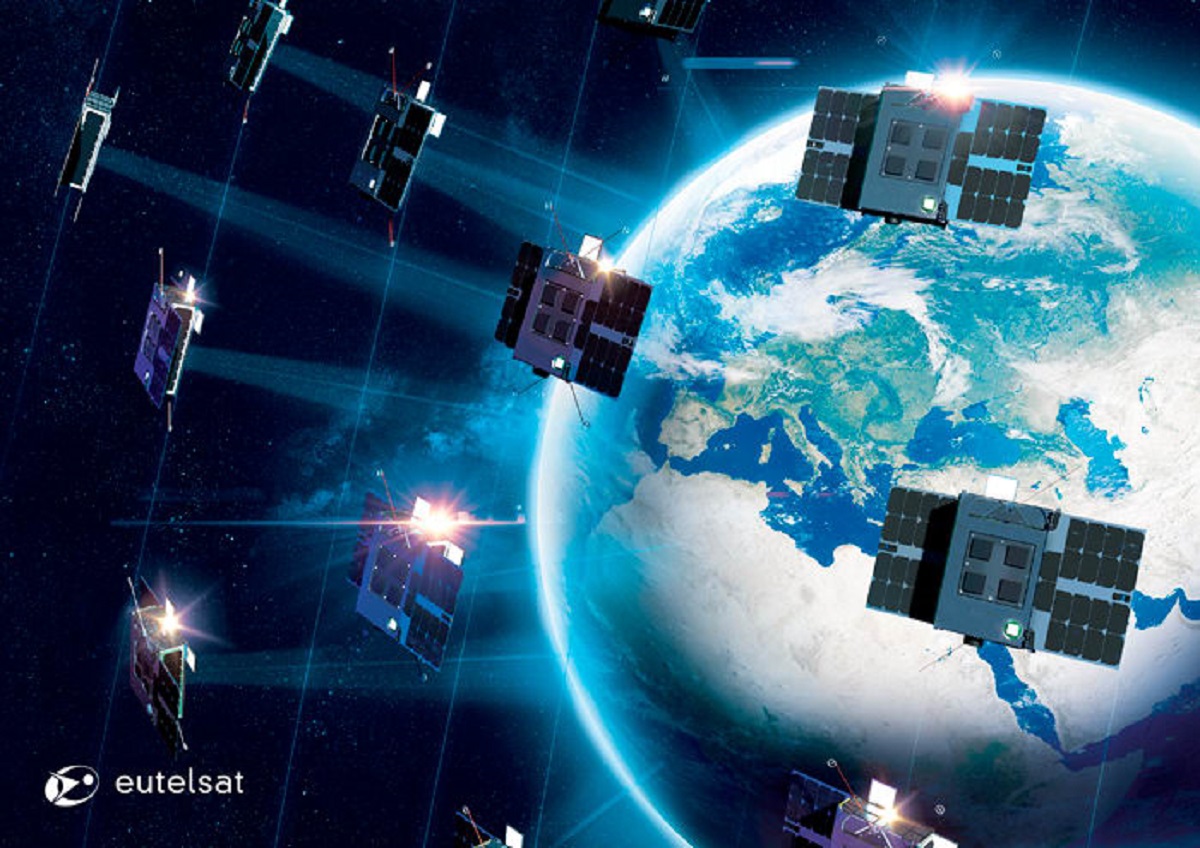
File photo: Satellites in orbit. Image via eutelsat.com
Space weather has been known to cause power outages and disrupt satellite operations.
In Becky Chambers’ 2019 novel To Be Taught, If Fortunate, a massive internet solar storm wiped out the Earth, leaving a group of astronauts stranded in space with no way to call home.
It’s a scary prospect, but could a solar storm hit the internet in real life? And if so, how likely is that to happen?
as you write Joanna Thompson In Live Science
Yes, it could happen, but it would take a massive solar storm, he told Live Science Matthew Owensa solar physicist at the University of Reading, UK.
“You’d need a really massive event to do that, which isn’t impossible,” Owens said. “But I think it is more likely to hit the power grids.” In fact, this phenomenon has already occurred on a small scale.
Solar storms, also known as space weather, occur when the sun emits a powerful burst of electromagnetic radiation. This disturbance releases waves of energy that travel outward, affecting other bodies in the solar system, including Earth. When alien electromagnetic waves interact with the Earth’s magnetic field, they have some effects.
The first is that they cause electrical currents to flow through Earth’s upper atmosphere, heating the air “just like your electric blanket,” Owens said. These geomagnetic storms can create beautiful aurorae that appear over the polar regions, but they can also disrupt radio and GPS signals.
Plus, as the atmosphere warms, it swells up like marshmallows, adding more drag to satellites in low Earth orbit and throwing smaller pieces of space junk off course.
The other effect of space weather is that of the Earth more so. When strong electrical currents flow through our planet’s upper atmosphere, they cause strong currents to flow through the crust as well. This can affect electrical conduits above the crust, such as power grids—the network of transmission lines that carry electricity from generating plants to homes and buildings.
The result is a power outage that can be difficult to repair. One such event struck Quebec on March 13, 1989, resulting in a 12-hour blackout, according to NASA.
Recently, a solar flare destroyed 40 Starlink satellites when SpaceX failed to check its space weather forecasts, Live Science previously reported.
Fortunately, removing a few Starlink satellites is not enough to disrupt global Internet access.
In order to wipe out the internet completely, a solar storm would have to interfere with the very long fiber-optic cables that run under the oceans and connect the continents.
Every 30 to 90 miles (50 to 145 kilometers), these cables are equipped with repeaters that help amplify their signal as it travels. While the cables themselves are not vulnerable to geomagnetic storms, repeaters are.
And if one repeater goes out, that could be enough to disconnect the entire cable, and if enough cables are disconnected, it could cause an “online apocalypse,” Live Science previously reported.
A global internet outage could be catastrophic – disrupting everything from the supply chain to the medical system to the stock market and people’s basic ability to work and communicate.
There are several ways to protect the internet from the next big solar storm. The first is to shore up power grids, satellites, and subsea cables against flow overload, including failures to strategically shut down grids during a solar storm outbreak.
The second, less expensive way is to come up with a better way to predict solar storms in the long term.
Can we predict solar storms?
Solar storms are very difficult to predict. In part, they can be “very hard to spot,” Owens said. “Because while space weather has been going on for thousands of years, the technology that is affected by it has only been around for a few decades.”
Current technology can predict solar storms up to two days before they hit Earth based on sunspot activity, which are black spots on the Sun’s surface that indicate areas of high plasma activity. But scientists can’t track solar storms the way they track hurricanes.
Instead, they turn to other cues, such as where the Sun is in its current solar cycle. NASA and the European Space Agency are currently studying ways to make such predictions using a combination of historical data and the latest observations.
The sun goes through about 11 years of either high or low activity, according to National Oceanic and Atmospheric Administration.
NASA previously predicted that the sun’s next activity peak, known as the solar maximum, would arrive around 2025. However, recent observations of sunspots and solar weather indicate that the next sun maximum will come much earlier and collide with greater force, the agency estimates. NASA. The next peak, which could begin in late 2023, will likely be more intense than the last solar maximum, which was relatively mild.
“The Sun has been very quiet since the ’90s,” Owens said. The last global geomagnetic storm (at least on record) is the so-called Carrington incident 1859, during which the aurora borealis were observed as far south as Cuba and Honolulu, Hawaii. If there was internet during this event, it would probably have been severely disrupted.
Hopefully, scientists can find a way to predict or minimize the impact of the next Carrington event before we find ourselves in a future without the Internet… although, given the terrifying depths of social media, there may be worse luck.
with information from Live Science
Predicted by Albert Einstein, and Science Proved It: ‘Life’ Moved Five Times Slower in the Universe When He Was an Infant [videos]
Follow HELLAS JOURNAL on NEWS GOOGLE
Hilasjournal – newsletter

“Total alcohol fanatic. Coffee junkie. Amateur twitter evangelist. Wannabe zombie enthusiast.”

-og.jpg?t=y7SX8xaU-xsaLEgDfmnp4A)


More Stories
The exact causes of unusual corrosion in Orion's heat shield are still unknown – NASA
Apple is gearing up for a partnership that could turn the iPhone upside down
Capcom is removing three of its games from Steam